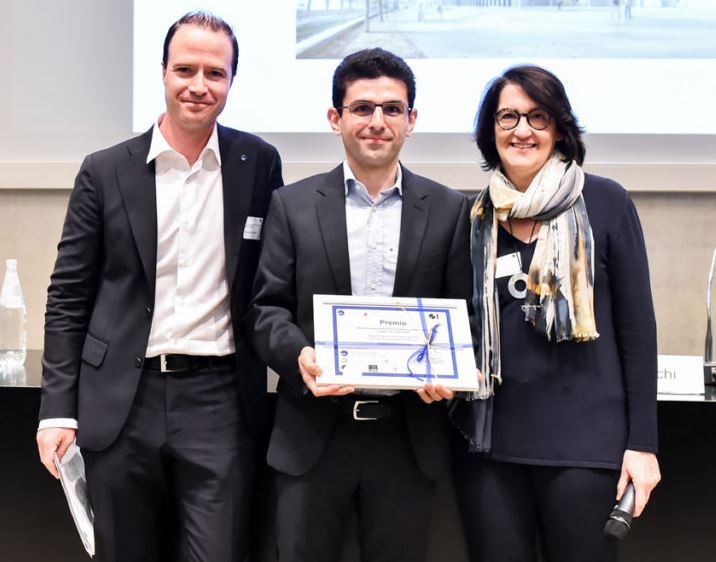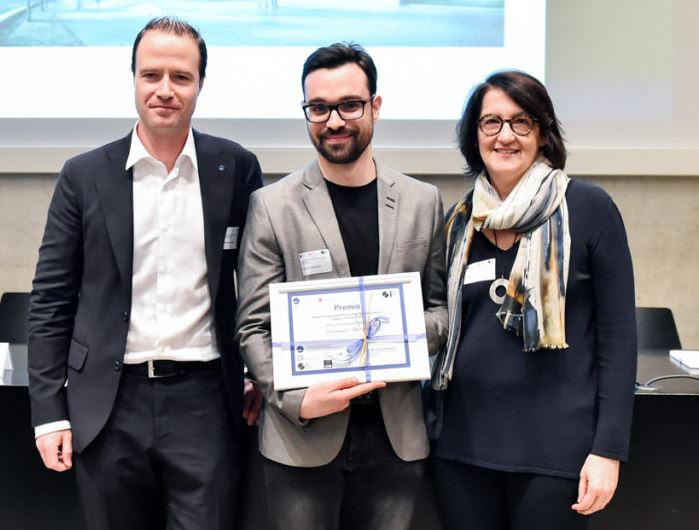on March 22, 2019
During the 9° giornata della Ricerca della Svizzera italiana, organized by the EOC Clinical Trial Unit and the Università della Svizzera italiana (USI), held at USI in Lugano on Friday March 15, 2019, a Postdoc and a PhD student affiliated to the Institute for Research in Biomedicine (IRB) were awarded for the best original publication 2018 and best talk 2019, respectively.
Dr. Samuele Notarbartolo, Postdoc in the Cellular Immunology laboratory headed by Prof. Sallusto, was awarded with the “Best original publication 2018 (age 35-45)” prize for the paper entitled “An immunoregulatory and tissue-residency program modulated by c-MAF in human TH17 cells” published last year in the renowned journal Nature Immunology. TH17 cells are lymphocytes playing a pivotal role in protection against extracellular bacteria and fungi, but they can also induce tissue damage and chronic inflammation, eventually leading to autoimmune diseases. In this study, Dr. Notarbartolo and the research team led by Prof. Sallusto, characterized two sub-populations of human TH17 cells that could be distinguished on the basis of their expression of the anti-inflammatory cytokine IL-10. The identification and characterization of two TH17 subsets with programmed opposing post-activation fates provides a new paradigm to investigate the physiological role of these cells and opens new possibilities for therapeutic interventions in autoimmune pathologies.
 |
| Alessandro Ceschi, Samuele Notarbartolo, Mariagrazia Uguccioni |
Alessandro Marazza, PhD student in the Protein Folding and Quality Control laboratory headed by Prof. Maurizio Molinari, received the prize for “Best talk 2019”. The project presented by Alessandro entitled “Hunter’s syndrome: characterization of four nonsense mutations in iduronate 2-sulfatase” aims at the characterization of the intracellular fate of disease-causing mutants of the lysosomal enzyme iduronate 2-sulfatase (IDS), responsible for degradation of heparan and dermatan sulfate within cells. Dysfunctional IDS due to genetic aberrations is eliminated prematurely by the cell, leading to cytotoxic accumulation of glycosaminoglycans. Affected patients manifest multi-systemic symptoms corresponding to a rare X-linked lysosomal storage disease (LSD) known as Hunter’s syndrome or mucopolysaccharidosis type II. During the presentation, it has been shown that the nonsense mutants as well as WT IDS are efficiently and co-translationally formylated at cysteine 84. This posttranslational modification is required for the IDS enzymatic activity. However, IDS W337X is retained in the endoplasmic reticulum (ER) and is subsequently degraded by the ubiquitin-proteasome system (UPS), whereas R443X, Y452X, L482X are appropriately transported to the lysosome but are rapidly destroyed by lysosomal enzymes resulting in a loss of function phenotype. Only WT IDS is post-translationally modified (formylated), correctly targeted to the lysosomes and shows enzymatic activity.
 |
| Alessandro Ceschi, Alessandro Marazza, Mariagrazia Uguccioni |
The IRB congratulates Samuele and Alessandro for the awards and wishes them all the best for their future careers.









